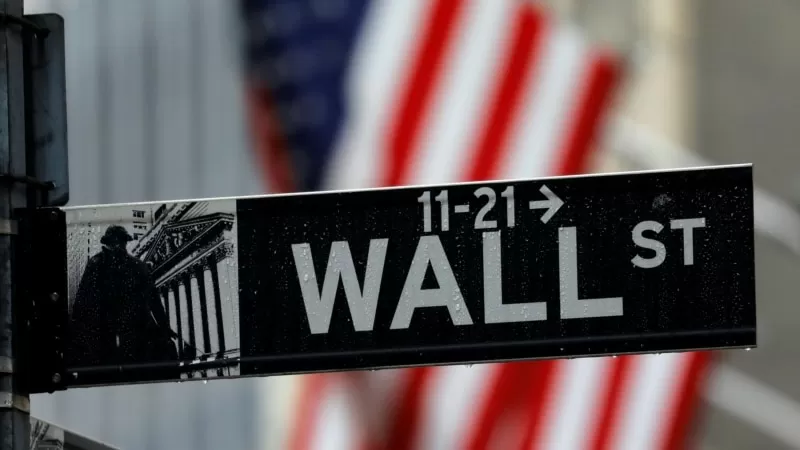New York – Economic fears are causing turmoil on Wall Street as concerns mount that the Federal Reserve may have kept interest rates too high for too long, ultimately hindering U.S. growth.
Recent economic data has only added to these worries. The latest report on job growth in July showed a slower than expected increase, while the unemployment rate rose to 4.3%. This has raised concerns that a weakening labor market could leave the economy vulnerable to a recession.
The release of the job report on Friday triggered a sell-off in stocks that had already begun on Thursday. Investors were responding to data that showed weakness in both the labor market and the manufacturing sector. This led to a mass dumping of stocks, including chip stocks and industrials, while investors sought refuge in defensive plays.
The tech sector, which had been highly valued, saw a significant decline on Friday, with the Nasdaq Composite falling more than 10% from its record high in July. The S&P 500 index has also dropped 5.7% from its peak in July.
Wasif Latif, president and chief investment officer at Sarmaya Partners, commented on the situation, saying, “This is what a growth scare looks like. The market is now realizing that the economy is indeed slowing down.”
For months, investors had been optimistic due to cooling inflation and a gradual slowdown in employment, believing that this would lead to the Fed cutting interest rates. This optimism had driven significant gains in the stock market, with the S&P 500 up 12% and the Nasdaq up nearly 12% this year.
However, now that a September rate cut is on the table following a Fed meeting this week, investors are worried that high borrowing costs may already be negatively impacting economic growth. Disappointing earnings results from companies like Amazon, Alphabet, and Intel have only added to these concerns.
James St. Aubin, chief investment officer at Ocean Park Asset Management, explained, “We’re witnessing the fallout from the curse of high expectations. So much had been invested around the scenario of a soft landing, that anything that even suggests something different is difficult.”
Next week will bring earnings reports from industrial giant Caterpillar and media and entertainment giant Walt Disney, which will provide further insight into the health of the consumer and manufacturing sectors. Reports from healthcare heavyweights like Eli Lilly will also give a better understanding of the state of the economy.
Futures markets on Friday showed a growing unease about the economy. Fed fund futures indicated that traders were pricing in a 70% chance of a 50-basis point cut at the central bank’s September meeting, compared to just 22% the day before, according to CME FedWatch. Futures also showed a total of 116 basis points in rate cuts for 2024, a significant increase from just over 60 basis points on Wednesday.
The broader markets also showed signs of unease, with the Cboe Volatility index (known as Wall Street’s fear gauge) reaching its highest level since March 2023. This rise in demand for options protection against a stock market selloff highlights the growing fear among investors.
Meanwhile, investors have been flocking to safe haven bonds and other defensive areas of the market. The yield on U.S. 10-year bonds dropped to 3.79%, the lowest since December, as investors sought the safety of bonds.
Sectors that are typically popular during times of economic uncertainty are also seeing increased interest from investors. Options data for the Health Care Select Sector SPDR Fund showed that the average daily balance between put and call contracts over the last month was the most bullish it has been in three years, according to a Reuters analysis of Trade Alert data. Similar trends were seen in trading for the Utilities Select Sector SPDR Fund, indicating that traders are expecting strength in these sectors.
In the past month, the healthcare sector has seen a 4% increase, while utilities have seen a significant 9% increase. In contrast, the Philadelphia SE Semiconductor index has dropped nearly 17% in the same period, with popular stocks like Nvidia and Broadcom experiencing sharp losses.
However, some investors believe that the recent data may just be a reason for investors to take profits after a strong year in the market.
Michael Purves, CEO of Tallbacken Capital Advisors, said, “This is a good excuse for investors to sell after a huge year-to-date rally. Investors should be prepared for some major volatility, particularly in the


